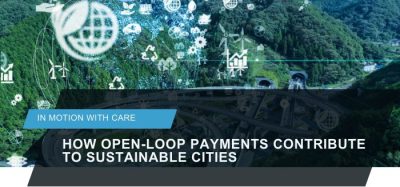Hacking Copenhagen with the ‘bicycle-as-a-sensor’
- Like
- Digg
- Del
- Tumblr
- VKontakte
- Buffer
- Love This
- Odnoklassniki
- Meneame
- Blogger
- Amazon
- Yahoo Mail
- Gmail
- AOL
- Newsvine
- HackerNews
- Evernote
- MySpace
- Mail.ru
- Viadeo
- Line
- Comments
- Yummly
- SMS
- Viber
- Telegram
- Subscribe
- Skype
- Facebook Messenger
- Kakao
- LiveJournal
- Yammer
- Edgar
- Fintel
- Mix
- Instapaper
- Copy Link
Posted: 13 March 2018 | Niccolò Panozzo | 1 comment
Very few solutions currently exist that measure, account for and integrate cycling mobility into a city’s ITS ecosystem, yet cities cannot afford to lose bicycles as methods of urban transportation. Niccolò Panozzo, Development Officer at the European Cyclists’ Federation (ECF), says they are too efficient, sustainable and economically beneficial to individuals and societies, and explains how the ‘Hacking Copenhagen Demonstration’ project, led by the ECF, will show the full potential of connected cycling.


EVERYDAY, thousands of Copenhageners cycle. They cycle an average of 1.34 million km per day. They fill the city, literally, but they do so quietly. An urban cyclist is a silent observer of a city’s daily life, but they don’t necessarily relay it to anyone. This is a lost opportunity, comparable to NASA sending a robot to Mars without a communication device. Bicycles are the only transportation mode that provide a journey directly door-to-door: no need for a 200m walk after parking or alighting a bus, nor having to spend 20 minutes searching for a parking space. This enables them to register accurate data about the length of time spent commuting and the quickest, most direct way of completing the journey. Moreover, bicycles don’t interfere with the environment: they move through it silently, lightly and without emitting pollution, meaning the data they collect is clean and reliable – and that’s where ITS becomes relevant.
During the ITS World Congress 2018, we will transform cyclists into data capturers and compose an accurate account of mobility in Copenhagen, more effectively than ever before. Denmark’s capital is already doing a lot to make technology serve mobility needs, but nothing as comprehensive and ambitious as this scheme has ever been attempted. Furthermore, this is a global issue that affects all cities around the world: providing a framework to leverage the information that cyclists gather could be a game changer in the future development of SUMPs, MaaS or IoT. We call this ‘smarter cycling’.
Smarter cycling is the shared, real-time collaborative application of data, communication technologies, products and services from both private and public actors, that helps people move better – individually and collectively – across the urban environment. Currently, cyclists are anonymously, individually competing with other urban transport systems; usually unseen, unheard and unconsidered. Urban transport planners have hardly any accurate or comprehensive means of identifying and monitoring the real-time movements of cyclists through urban environments. Consequently, they have little understanding of how they can improve the mobility offering. To move forward and improve this situation we need to move from today’s mechanical, individualist cycling to tomorrow’s connected cycling.
Creating the smarter cycling ecosystem
With a comprehensive set of tools, we can equip all the cyclists in town to report what they experience back to a central system. We will map where and when they ride, for how long, how fast, where they stop and for what length of time, where the best-quality air is, which streets need maintenance, which are the most dangerous intersections and which streets cyclists avoid. We can also learn how temperatures vary between different neighbourhoods, why and what the correlation is between weather and air quality and temperature and mode share, or between a neighbourhood’s profile (residential, industrial, commercial, social) and rush hours, or between transport density and road safety – the list goes on. These are the most obvious and immediate questions to address: once cross-referencing comes into play, another level of analysis arises. For example, what happens when you overlap the mobility heat map and the most used social network in that area? Or the air quality, cancer rate and tree canopy density?
We aim to show what happens if we could transform every bicycle in Copenhagen into a data collection device, scanning the city without disturbance. All this data will be sent in real time to a single platform, where it will be aggregated and made available for deep analysis together with historical datasets, such as map data or validated @IntelTransport count data. A pool of data visualisation experts, visionary urban planners, creative PhD students and hackathon participants will then smartly mix data from various systems, collecting different information in a single language and showing how deeply cyclists know their city – and vice versa.
Always prioritise cycling
In order to be truly representative of what is really going on at street level, this project needs to reach the largest possible number of citizens and collect the widest possible set of data. The main inherent difficulty – that even if it were possible, would be extremely limiting – is using only one data collection system. However, crowdsourcing data from a range of different systems (thus supposedly using different formats) and making them capable of communicating with each other will require extensive work. This project aims to create a standard for real-time data-sharing that is simple enough to be adopted by any kind of system but complex enough to allow interoperability and communication between wide ranges of datasets.
The proof-of-concept pilot test in Copenhagen will also demonstrate the endless possibilities for understanding the city through analysis and insights that bicycles and cyclists offer. And it will all be delivered in an open format form, from which everyone will be able to benefit.
Future benefit to the cyclist
At this point, the second stage of the project comes into play: inverting the direction of the communication. After receiving all the information from the cyclists, we want to circle it back to them to allow them to make better informed decisions. Providing real-time route updates and recommendations based on thoughtful analyses of all the available options regarding bicycle and motorised traffic congestion levels, air pollution, construction areas, high concentrations of lorries, etc. This would guarantee that cycling will always be the best solution both for the rider and the entire community: the fastest, safest, healthiest and cheapest.
Biography
NICCOLÒ PANOZZO is Development Officer at the European Cyclists’ Federation, a not-for-profit organisation that promotes cycling mobility across the EU. Panozzo works with industry partners as well as public authorities and institutions on smart mobility and its integration into smart city paradigms, making sure that cycling is always taken into account when planning mobility services, even in the digital age.
Related topics
Intelligent Transport Systems (ITS)
Issue
Issue 1 2018
Related modes
Bikes & Scooters
Related organisations
European Cyclists’ Federation
Related people
Niccolò Panozzo








This is a great article. I would like to learn more about this excellent effort in advance of ITSWC. Please contact me.